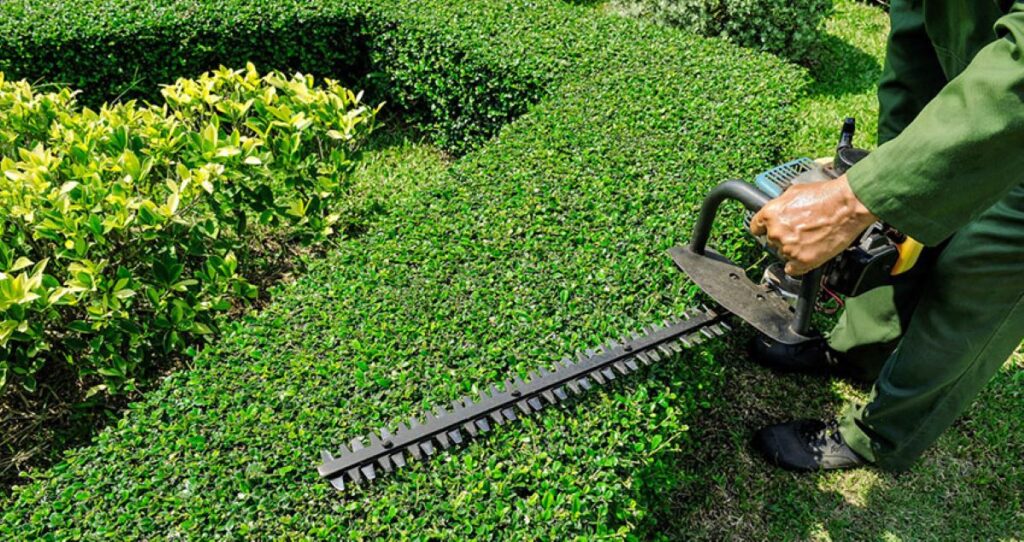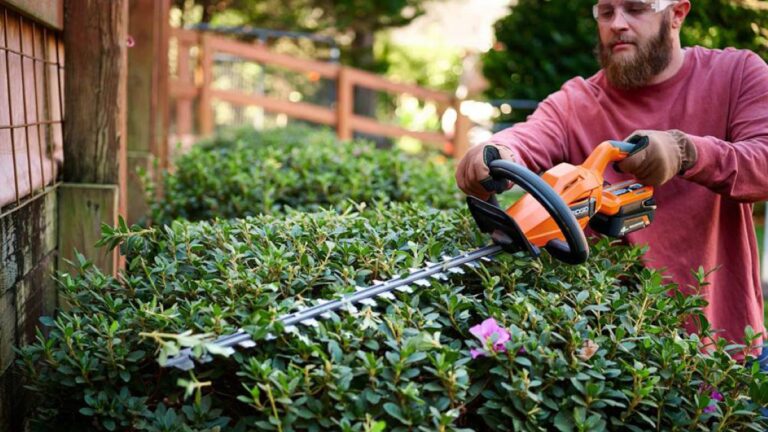Hedges play a significant role in the aesthetics and functionality of residential gardens. They serve as natural barriers, provide privacy, and enhance the overall appeal of your landscape. To keep hedges looking their best, regular trimming is essential. In this article, we will explore the importance of hedge trimming, the tools required, and step-by-step guidance for maintaining your hedges effectively.
Understanding the Basics of Hedge Trimming
Importance of Regular Hedge Trimming
Regular hedge trimming is vital for several reasons. Firstly, it promotes healthy growth by removing dead or diseased branches. This process encourages the plant to focus its energy on new growth rather than trying to sustain unhealthy parts. Moreover, well-maintained hedges can enhance the visual appeal of your garden, offering a clean and organized look. A well-trimmed hedge can serve as a beautiful backdrop for blooming flowers or a striking contrast to the greenery of your lawn, adding depth and character to your outdoor space.
Additionally, residential hedge trimming can help prevent your hedges from becoming overgrown, which can lead to more significant issues in the future, such as pest infestations or instability during storms. By keeping your hedges at a manageable height and shape, you ensure not only their health but also the safety of your property. Furthermore, regular trimming can improve air circulation and sunlight penetration, which are essential for the overall health of the plants. This practice not only benefits the hedges themselves but also creates a more inviting environment for beneficial insects and birds, contributing to a thriving ecosystem in your garden.
Essential Tools for Hedge Trimming
To effectively trim your hedges, it’s crucial to have the right tools at your disposal. Here’s a list of essential tools you should consider:
- Hedge Shears: Ideal for smaller hedges and precise cutting.
- Electric Hedge Trimmer: Great for larger hedges and reducing fatigue.
- Loppers: Useful for cutting thicker branches that are difficult to handle with shears.
- Pruning Saw: Essential for heavy-duty trimming and shaping of robust hedges.
- Safety Gear: Includes gloves, goggles, and long sleeves to protect against cuts and debris.
Having these tools ready will make the trimming process more efficient and enjoyable. Additionally, it’s wise to keep your tools well-maintained; sharp blades will not only make your job easier but also ensure cleaner cuts that promote quicker healing for the plants. Regularly cleaning your tools after use can prevent the spread of diseases from one plant to another, safeguarding the health of your garden. Investing in high-quality tools may seem costly upfront, but the durability and efficiency they offer can save you time and effort in the long run, making your gardening experience more rewarding.
Preparing Your Garden for Hedge Trimming
Evaluating the Condition of Your Hedges
Before diving into trimming, take a moment to evaluate the condition of your hedges. Look for signs of disease, such as discoloration or wilting leaves. Assess the shape and size—does it appear overgrown, or is it in need of a light trim? This step is crucial in determining how much work needs to be done and what specific techniques to apply.
Furthermore, check for any wildlife making a home in the hedges. Birds or other animals might be nesting, so it’s considerate to wait until after the breeding season to avoid disturbing them. Additionally, inspecting the base of the hedges for any signs of pests or invasive plants can help you address potential issues before they escalate. A healthy hedge not only looks great but also supports local biodiversity, providing shelter and food for various species.
Timing Your Hedge Trimming Activities
Timing is paramount in hedge trimming. Each type of hedge has its ideal trimming period. For most hedges, late winter or early spring, before new growth starts, is the best time to trim. This timing allows the plant to respond well to pruning, promoting fuller growth during the growing season.
However, some flowering hedges, such as lilacs, should be pruned immediately after they flower. This helps preserve the blooms for the following year. It’s beneficial to familiarize yourself with the specific requirements of your hedges, ensuring you trim at the optimal time. In addition, consider the weather conditions; trimming during dry spells can minimize the risk of fungal infections, while avoiding extremely hot days can prevent stress on the plants. Keeping an eye on the forecast will help you choose the best day for your hedge trimming activities, ensuring a healthier and more vibrant garden.
Step-by-Step Guide to Hedge Trimming
Safety Measures to Consider
Before you start trimming, it’s essential to prioritize safety. Begin by wearing protective eyewear and gloves to shield yourself from debris. Ensure your work area is free from obstacles, and consider using a sturdy ladder if trimming taller hedges. If you are using electric tools, always check the power source and cords for safety.
Lastly, it’s a good idea to inform others in your vicinity about your trimming schedule, especially if you’re using loud machinery. This way, you can avoid accidents and ensure everyone is aware of your activities. Additionally, consider wearing ear protection if you are using particularly noisy equipment, as prolonged exposure to loud sounds can lead to hearing damage over time. It’s also wise to have a first aid kit nearby, just in case of any minor injuries that might occur during the trimming process.

Techniques for Different Hedge Types
Each hedge type may require different techniques for trimming. Here are some common types and their corresponding trimming guidelines:
- Deciduous Hedges: Cut back vigorously in the spring to encourage dense growth. These hedges often benefit from a more aggressive approach, allowing new shoots to flourish and fill in gaps.
- Evergreen Hedges: Trim in late spring or early summer to maintain shape and promote healthy foliage. Regular trimming helps prevent the inner branches from becoming bare, ensuring a lush appearance throughout the year.
- Flowering Hedges: As mentioned earlier, prune right after flowering to enhance bloom production. This timing allows the plant to focus its energy on producing new flowers for the next season.
Always take care to maintain the natural shape of the hedge, rather than forcing it into a boxy or unnatural form. For a more aesthetically pleasing result, consider using a technique called “tipping,” where you lightly trim the tips of the branches to encourage bushiness without drastically altering the hedge’s silhouette. Furthermore, it’s beneficial to step back periodically during the trimming process to assess your work from a distance, ensuring that the hedge maintains a balanced and uniform look. Remember, a well-trimmed hedge not only enhances the beauty of your landscape but also promotes the health of the plants, allowing them to thrive for years to come.
Maintaining Your Hedges Post-Trimming
Watering and Fertilizing Your Hedges
After trimming, your hedges may need extra care to recover and grow strong. Watering is essential, especially if the trimming was substantial. A deep watering session can help the plants bounce back and encourage new growth, particularly during the warmer months. It’s best to water in the early morning or late afternoon to minimize evaporation and allow the roots to absorb moisture effectively. Additionally, consider using mulch around the base of your hedges to retain soil moisture and regulate temperature, which can further support healthy growth.
Fertilizing your hedges is another critical post-trimming task. Consider using a balanced fertilizer to give them the nutrients they need. Be careful not to over-fertilize, as this can lead to unhealthy growth patterns. Organic options, such as compost or well-rotted manure, can provide a slow-release source of nutrients that improve soil health over time. Applying fertilizer in the spring and again in late summer can help ensure your hedges have the necessary nourishment during their peak growing seasons.
Monitoring Hedge Health
Post-trimming care doesn’t end with watering and fertilizing. Regularly check your hedges for any signs of distress or disease. Look for symptoms like yellowing leaves or stunted growth, as these may indicate underlying issues that need addressing. Additionally, inspect for pests such as aphids or spider mites, which can wreak havoc on your hedges if left unchecked. Early detection is key, so consider using insecticidal soap or neem oil as a natural remedy to keep these pests at bay.
By keeping an eye on your hedges, you ensure they remain healthy and vigorous throughout the seasons. This vigilance will help you catch any problems early, allowing you to rectify them before they become serious. Furthermore, consider the seasonal changes that may affect your hedges. For instance, during the fall, be on the lookout for leaf drop or discoloration, which can signal stress from environmental factors. Keeping a seasonal care calendar can help you stay organized and proactive in maintaining the overall health of your hedges, ensuring they continue to thrive year after year.

Troubleshooting Common Hedge Problems
Dealing with Overgrown Hedges
Overgrown hedges can quickly become a nuisance, blocking views and light. Tackling these requires a thoughtful approach. Start by assessing how much you need to cut back—never remove more than one-third of the plant at once. This helps minimize stress on the hedge.
For severe overgrowth, consider a two-step process. Trim back significantly in one session, and then allow the hedge to recover before shaping and refining it in another session. This approach will help maintain the health of the hedge while achieving the desired size. Additionally, after trimming, it’s beneficial to apply a balanced fertilizer to encourage new growth and strengthen the plant’s resilience against future overgrowth. Regularly scheduled maintenance, such as seasonal trimming, can also prevent the need for drastic cuts in the future, keeping your hedges looking neat and manageable.
Addressing Hedge Diseases and Pests
Hedges can be susceptible to various diseases and pests, which can undermine their health and appearance. If you notice discolored leaves, stunted growth, or unusual insect activity, prompt action is necessary. Identify the specific problem, which may involve researching or consulting with a gardening professional.
Common solutions include targeted pruning to remove infected parts, applying appropriate treatments, and ensuring good cultural practices, such as proper watering and spacing. By staying proactive, you can help your hedges thrive and avoid issues that could lead to larger concerns. Furthermore, introducing beneficial insects, like ladybugs or lacewings, can naturally control pest populations, reducing the need for chemical interventions. Regular inspections of your hedges will also allow you to catch any potential issues early, ensuring that your plants remain healthy and vibrant throughout the seasons.
In conclusion, regular hedge trimming and maintenance are key to keeping your residential garden tidy and well-maintained. By understanding the basics, preparing appropriately, following a systematic approach to trimming, and addressing any issues as they arise, you can enjoy a beautiful garden full of healthy and vibrant hedges.
Related : The Benefits of Regular Hedge Maintenance: A Guide for Homeowners
